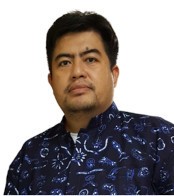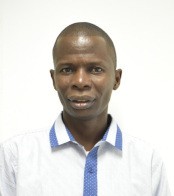 Dr Iqbal Elyazar is a geospatial epidemiologist, biostatistician, and health informatician in Jakarta with current interests in biostatistics, health informatics, mapping, disease surveillance, and data analytics. He holds a DPhil from the University of Oxford and a Master of Public Health degree from University of Indonesia. He is a program manager for geospatial epidemiology at the Oxford University Clinical Research Unit Indonesia. He received the Wellcome Trust Fellowship in Tropical Medicine and Health. He collaborated with the Malaria Atlas Project for mapping global malaria and mosquito vectors, the Institute for Health Metrics and Evaluation for the Global Burden of Diseases Study, the World Health Organization Office in Indonesia for the mobile and migrant population study, and the Indonesian Ministry of Health for advanced data analysis and technical advisory for infectious disease elimination. He led courses on infectious disease geospatial mapping for program managers at provincial and district health offices in Indonesia. He also served as a member of the Malaria Technical Working Group at the Global Fund Program for AIDS, TB, and Malaria in Indonesia.
Dr Iqbal Elyazar is a geospatial epidemiologist, biostatistician, and health informatician in Jakarta with current interests in biostatistics, health informatics, mapping, disease surveillance, and data analytics. He holds a DPhil from the University of Oxford and a Master of Public Health degree from University of Indonesia. He is a program manager for geospatial epidemiology at the Oxford University Clinical Research Unit Indonesia. He received the Wellcome Trust Fellowship in Tropical Medicine and Health. He collaborated with the Malaria Atlas Project for mapping global malaria and mosquito vectors, the Institute for Health Metrics and Evaluation for the Global Burden of Diseases Study, the World Health Organization Office in Indonesia for the mobile and migrant population study, and the Indonesian Ministry of Health for advanced data analysis and technical advisory for infectious disease elimination. He led courses on infectious disease geospatial mapping for program managers at provincial and district health offices in Indonesia. He also served as a member of the Malaria Technical Working Group at the Global Fund Program for AIDS, TB, and Malaria in Indonesia.

Ms. Nancy Fullman, MPH is a population health researcher with expertise in measuring health service access and utilization. She has contributed to novel extensions of the Global Burden of Disease study, including indices on healthcare access and quality, universal health coverage, and effective coverage, as well as research assessing drivers of childhood vaccination. Ms. Fullman is currently a PhD student in Global Health Metrics and Implementation Science at the University of Washington, where she also is a teaching assistant for public health research methods at the undergraduate level. In addition, Ms. Fullman is a research fellow at the Exemplars in Global Health program at Gates Ventures, where she conducts analytic work on vaccine delivery and health facility data.
 Dr Ezra Gayawan is a Senior Lecturer at the Department of Statistics, Federal University of Technology, Akure, Nigeria and a collaborator in the Malaria Atlas Project based at the Telethon Kids Institute, Perth, Australia. He was a Visiting Professor at Universidade Estadual de Campinas, Campinas, Brazil between 2019 and 2020. He earned a PhD in Statistics from University of Ilorin, Nigeria, where he developed stochastic models to understand the patterns of age-specific fertility rates across sub-Saharan African countries. His interests thereafter shifted to the application of geospatial models to understand and map disease prevalence, maternal and child health outcomes, and utilization of healthcare services in developing countries. He is passionate about using geospatial models to characterise variations in health outcomes across small areas to aid in developing policies that could lead to the achievement of the Sustainable Development Goals in low income countries. He is a fellow of the Nigeria Young Academy.
Dr Ezra Gayawan is a Senior Lecturer at the Department of Statistics, Federal University of Technology, Akure, Nigeria and a collaborator in the Malaria Atlas Project based at the Telethon Kids Institute, Perth, Australia. He was a Visiting Professor at Universidade Estadual de Campinas, Campinas, Brazil between 2019 and 2020. He earned a PhD in Statistics from University of Ilorin, Nigeria, where he developed stochastic models to understand the patterns of age-specific fertility rates across sub-Saharan African countries. His interests thereafter shifted to the application of geospatial models to understand and map disease prevalence, maternal and child health outcomes, and utilization of healthcare services in developing countries. He is passionate about using geospatial models to characterise variations in health outcomes across small areas to aid in developing policies that could lead to the achievement of the Sustainable Development Goals in low income countries. He is a fellow of the Nigeria Young Academy.

Dr Peter Macharia is a spatial epidemiologist-postdoc research fellow based at the Department of Public health in the Institute of Tropical Medicine, Antwerp, Belgium. He is also a visiting researcher at KEMRI Wellcome Trust Research Programme, Kenya. He is interested in the application of geospatial models to derive spatial health metrics to aid in a better understanding of health inequalities, vulnerabilities, and population health. He holds a BSc in Geomatic Engineering & Geospatial Information Systems (GIS), a post graduate diploma in health research methods, MSc in GIS and remote sensing, and a PhD in spatial epidemiology.

